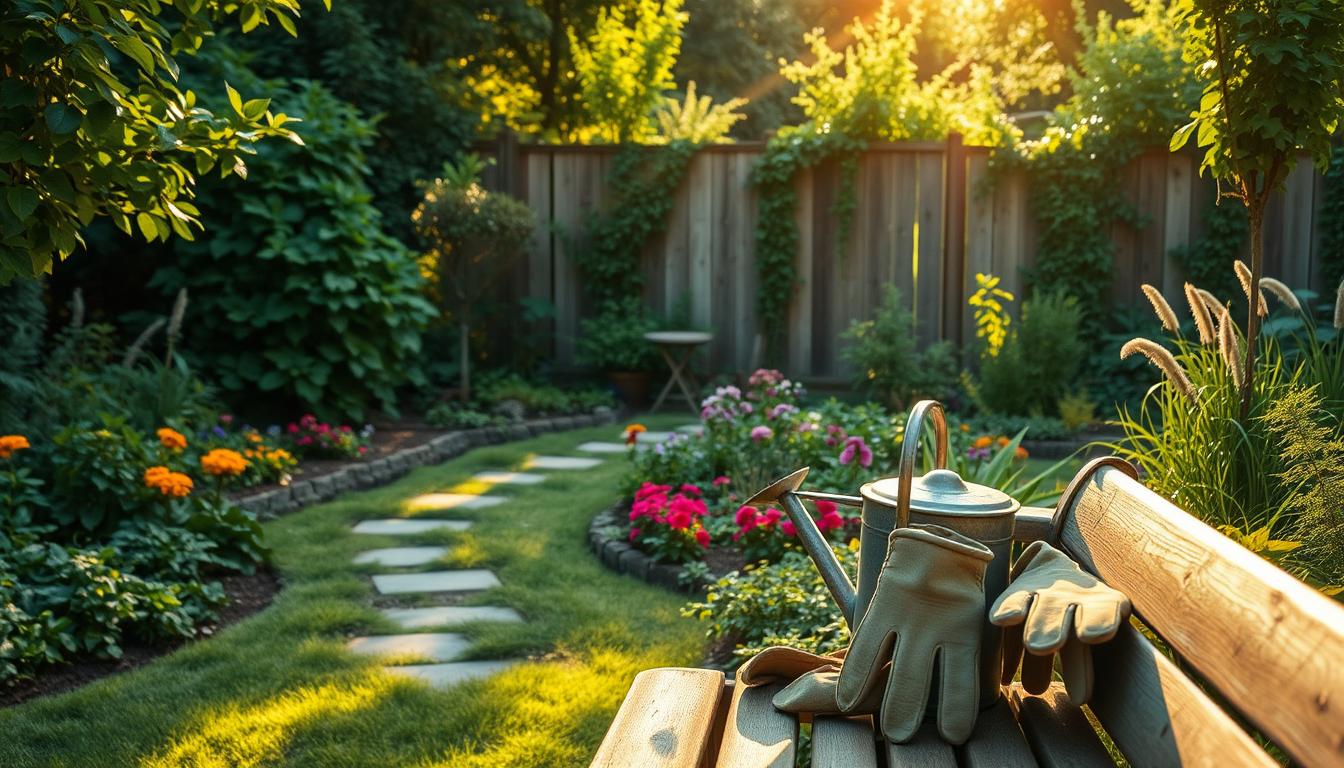Starting a garden is a rewarding activity that doesn’t require much space. Whether you’re growing herbs, flowers, or vegetables, the benefits are endless. Fresh produce, improved mental health, and quality family time are just a few reasons to get started.
For beginners, the key is to start small. A well-planned space, healthy soil, and the right plants can make all the difference. Techniques like raised beds and vertical gardening save time and effort, making it easier to maintain your garden even with a busy schedule.
Experienced gardeners often share success stories that inspire newcomers. From 15-year veterans to families with kids, anyone can enjoy the process. Remember, any space—big or small—can be transformed into a thriving vegetable garden.
Soil health is crucial. Adding organic matter ensures your plants grow strong and healthy. With a little planning and care, you’ll soon enjoy the fruits of your labor. Let’s dive into the essentials to help you get started on your garden journey!
Key Takeaways
- Fresh produce and mental health benefits make gardening rewarding.
- Start small with a well-planned space and healthy soil.
- Raised beds and vertical gardening save time and effort.
- Soil health is essential for strong, healthy plants.
- Any space can be transformed into a thriving garden.
Why Start Gardening in Your Backyard?
Growing your own food and plants can change your lifestyle for the better. A garden offers more than just fresh produce; it’s a gateway to healthier living and a stronger connection to nature. Whether you’re planting vegetables or nurturing flowers, the benefits are endless.
One of the most compelling reasons to start a garden is the environmental impact. Trees and plants absorb carbon dioxide, reducing your carbon footprint. Just one tree can absorb up to 1 pound of CO2 daily. Imagine the difference a full garden can make!

Gardening also boosts mental health. Spending time outdoors and caring for plants can reduce stress and improve focus. Studies show that connecting with nature can even help children with ADHD or autism thrive. It’s a therapeutic activity for all ages.
Physical health benefits are another major perk. Tending to a garden is like a moderate exercise regimen. Digging, planting, and watering keep you active and fit. Plus, the fresh produce you grow is packed with nutrients—up to 40% more than store-bought options.
Families also find that gardening strengthens bonds. 68% of families report improved relationships after working together in a garden. It’s a fun, educational activity that teaches kids about sustainability and STEM concepts. Schools with gardens have even seen improved test scores.
Economically, a garden can save you money. On average, families save $600 annually on groceries by growing their own food. With a 3-month growing season, you can enjoy fresh vegetables while ensuring food security for your household.
From reducing your carbon footprint to improving mental health, a garden is a powerful tool for positive change. Start small, and you’ll soon reap the rewards of this fulfilling activity.
Choosing the Perfect Location for Your Garden
Finding the right spot for your plants can make or break your growing success. The location you choose affects everything from growth to yield. Focus on three key factors: sunlight, water, and soil.

Sunlight and Water Access
Most vegetables need at least 8 hours of direct sunlight daily. Use apps like Sun Surveyor or Sun Seeker to map the sun’s path in your yard. This helps you identify the brightest spots.
Water is equally important. Aim for a spot within 50 feet of a water source. A rainwater collection system can save money and ensure consistent hydration. Plants typically need 1 inch of water weekly.
Soil Quality and Preparation
Healthy soil is the foundation of a thriving garden. Test your soil’s pH and drainage using affordable kits or local labs. Sandy soil drains quickly but lacks nutrients, while clay retains water but can suffocate roots.
For poor soil conditions, consider raised beds or hugelkultur techniques. These methods improve drainage and fertility. Companion planting can also help manage shade and maximize space.
“Good soil is like a good foundation—it supports everything you build on it.”
| Soil Type | Characteristics | Solutions |
|---|---|---|
| Sandy | Drains quickly, low nutrients | Add compost, mulch |
| Clay | Retains water, dense | Mix in sand, organic matter |
| Loamy | Balanced, ideal | Maintain with compost |
For more tips on starting your garden, check out this beginner’s guide. With the right location, your plants will thrive and reward you with a bountiful harvest.
Planning Your Backyard Garden Layout
A well-planned layout is the backbone of a thriving outdoor space. Whether you’re working with a small area or a larger plot, thoughtful design ensures your plants grow healthy and strong. Start by considering your goals: Are you growing vegetables, flowers, or a mix of both? This will guide your layout decisions.
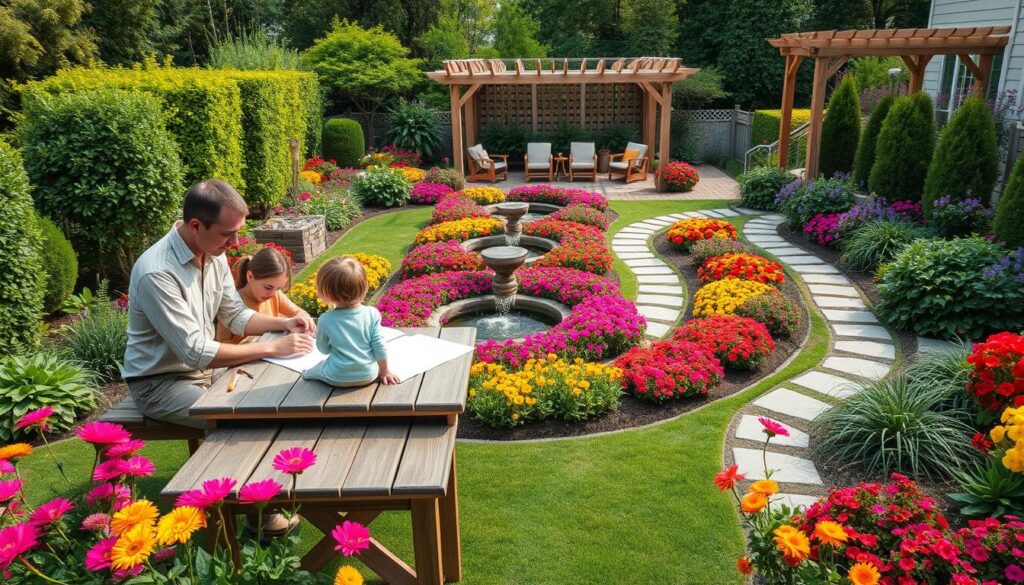
Raised Beds vs. Traditional Rows
Raised beds are a popular choice for many reasons. They offer better drainage, reduce soil compaction, and make it easier to control weeds. A 3′ width is ideal for accessibility and efficient use of space. Materials like cedar or composite are durable and long-lasting, though cedar is more eco-friendly.
Traditional rows, on the other hand, work well for larger plots. They’re cost-effective and require minimal setup. However, they can be harder to maintain and may not maximize space as efficiently as raised beds.
Maximizing Space with Vertical Gardening
If you’re short on space, vertical gardening is a game-changer. Systems like GreenStalk or Garden Tower can increase yields by up to 400%. Trellises and wall planters support heavy produce, like tomatoes or cucumbers, while freeing up ground space for other crops.
Here are some tips to make the most of your layout:
- Use square foot gardening spacing charts for efficient planting.
- Implement a crop rotation system to maintain soil health.
- Interplant fast-growing crops with slower ones for continuous harvests.
- Choose pathway materials like wood chips or gravel for easy access.
With the right planning, your outdoor space can be both productive and beautiful. Start small, experiment, and enjoy the process!
Essential Tools and Supplies for Beginners
Equipping yourself with the right tools is the first step to a successful growing experience. Whether you’re planting vegetables or nurturing flowers, having the proper supplies makes the process easier and more enjoyable.
Start with these must-have items: a Dutch hoe for weeding, a hori-hori knife for versatile digging, and seedling trays for starting your seeds. These basics are affordable and highly effective for beginners.
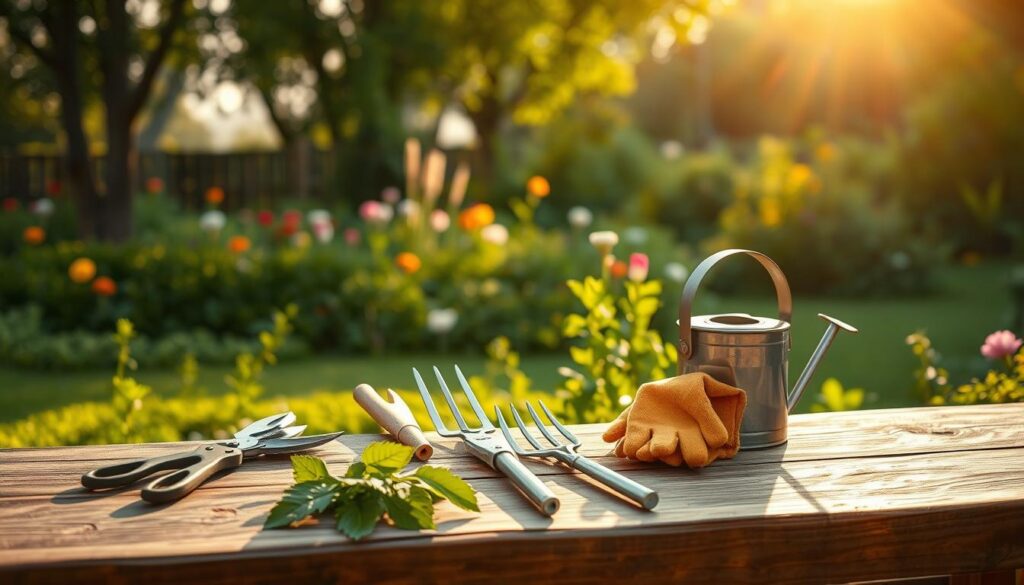
If you’re on a budget, a starter kit under $100 can cover all your needs. Look for ergonomic designs to reduce strain on your hands and back. A DIY seed starting station is another cost-effective option, using recycled materials like egg cartons or yogurt cups.
Understanding soil and fertilizers is crucial. Organic fertilizers with balanced NPK ratios (nitrogen, phosphorus, potassium) promote healthy growth. Compare potting mix and garden soil to determine the best fit for your plants.
Watering systems like drip irrigation or soaker hoses save time and conserve water. Drip systems deliver water directly to the roots, while soaker hoses are ideal for larger areas. Choose based on your space and needs.
Safety is important, especially for kids. Equip them with gloves, hats, and sunscreen to protect against sunburn and scratches. Teach them how to handle tools safely to avoid accidents.
Maintain your tools with a regular cleaning and sharpening schedule. This extends their lifespan and ensures they’re always ready for use. Check seed viability charts to know how long your seeds will last.
Finally, explore local tool libraries for affordable access to high-quality equipment. These community resources are perfect for beginners who want to try different tools before investing.
With the right supplies and a little preparation, you’ll be well on your way to creating a thriving outdoor space. Start small, stay organized, and enjoy the journey!
Selecting the Right Plants for Your Garden
Choosing the right plants can transform your outdoor space into a vibrant haven. Whether you’re growing vegetables or nurturing flowers, the key is to pick varieties that suit your space and climate. Start with easy-to-grow options, and you’ll enjoy a thriving area in no time.
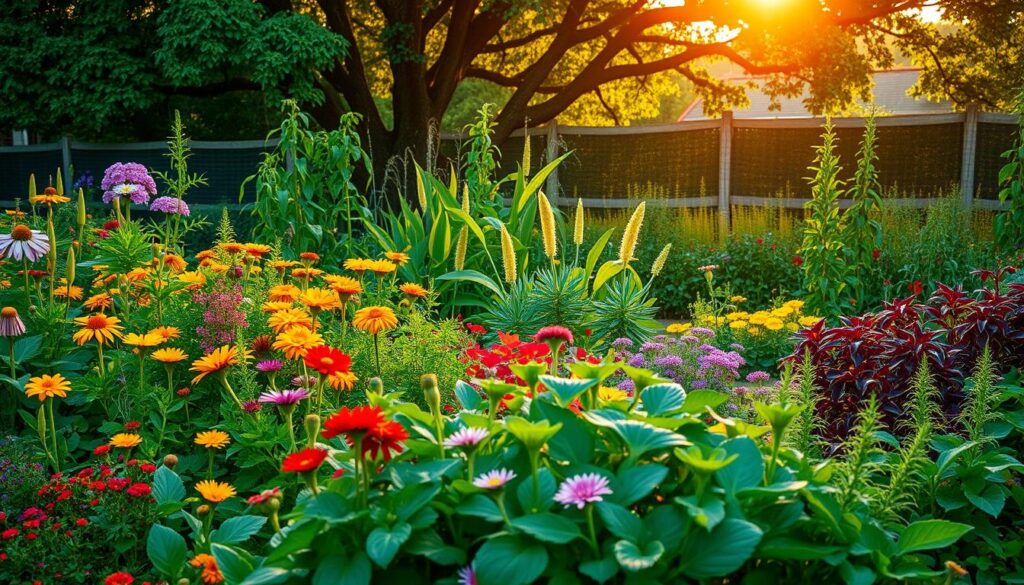
Easy-to-Grow Vegetables for Beginners
If you’re new to growing your own food, start with simple vegetables like lettuce, zucchini, and bush beans. These crops are low-maintenance and perfect for beginners. Lettuce grows quickly and can be harvested multiple times in a single season.
Zucchini is another great choice. It’s prolific and thrives in warm weather. Bush beans are compact and don’t require staking, making them ideal for small spaces. Tomatoes are also a favorite, but choose determinate varieties for easier care.
Here are some tips for success:
- Check your USDA zone for planting guides.
- Opt for pest-resistant hybrid varieties.
- Use companion planting to maximize space and deter pests.
Best Flowers for a Stunning Backyard
For a burst of color, consider flowers like zinnias and sunflowers. Zinnias are hardy, bloom all season, and attract pollinators. Sunflowers are tall, cheerful, and easy to grow from seeds.
If you want continuous blooms, plant annuals like marigolds or petunias. These flowers are perfect for borders or containers. For a touch of elegance, add perennials like lavender or coneflowers.
Here’s a quick guide to stunning blooms:
- Zinnias: Pollinator-friendly and low-maintenance.
- Sunflowers: Perfect for adding height and drama.
- Marigolds: Great for pest control and vibrant color.
With the right plants, your outdoor space will flourish. Start small, experiment, and enjoy the process of creating a beautiful and productive area.
Soil Health and Organic Matter
Healthy soil is the foundation of any thriving outdoor space. It’s where your plants draw nutrients, water, and support. By focusing on soil health, you can ensure your plants grow strong and produce bountiful yields. Adding organic matter like compost and mulch is one of the best ways to improve soil quality.
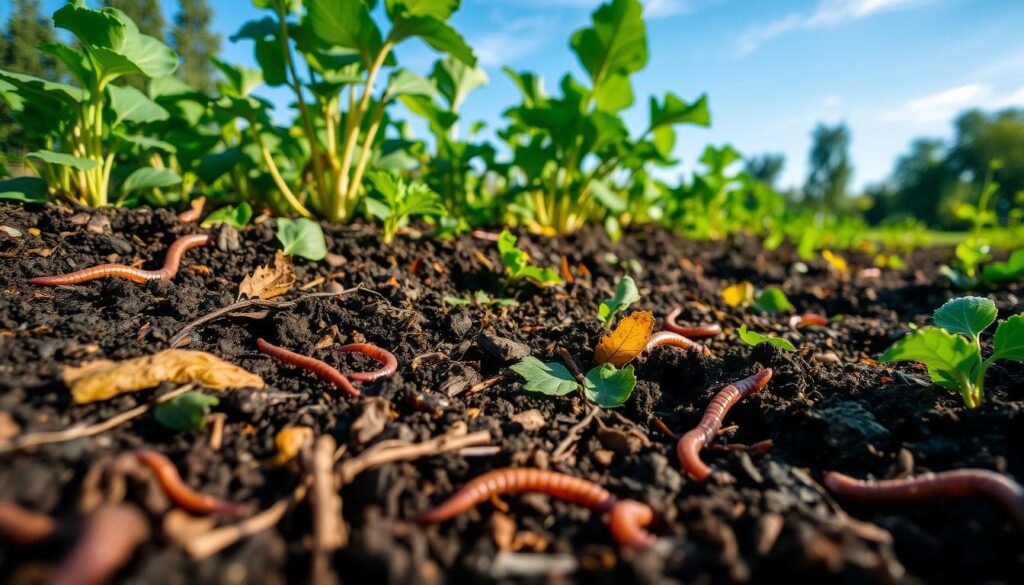
Importance of Compost and Mulch
Compost is a powerhouse for your soil. It enriches the ground with nutrients, improves water retention, and encourages beneficial microorganisms. Studies show that proper composting can increase yields by up to 30%. Whether you’re using kitchen scraps or yard waste, composting is a simple way to recycle and boost your soil.
Mulch, on the other hand, protects your soil from erosion and extreme temperatures. It also suppresses weeds and retains moisture. Different types of mulch, like wood chips or straw, have varying depth requirements. For example, wood chips should be 2-4 inches deep, while straw works best at 3-6 inches.
Here are some tips to get started:
- Brew compost tea for a nutrient-rich liquid fertilizer.
- Explore urban composting solutions like worm bins or bokashi systems.
- Use the lasagna layering technique to build soil naturally over time.
Building Healthy Soil for Long-Term Success
Creating healthy soil is a long-term investment. Start by testing your soil’s pH and nutrient levels. This helps you understand what amendments are needed. For example, adding lime can raise pH, while sulfur lowers it. Mycorrhizal fungi are another great addition, as they improve nutrient uptake for plants.
Green manure cover crops, like clover or rye, are excellent for enriching soil. They add organic matter and prevent erosion during the off-season. Leaf mold, made from decomposed leaves, is another natural soil conditioner that takes about 6-12 months to produce.
If you’re working with limited space, consider a raised garden. It allows you to control soil quality and drainage more effectively. Municipal compost programs are also a valuable resource for urban growers.
“Healthy soil is the lifeblood of a thriving garden. Invest in it, and your plants will reward you tenfold.”
| Soil Amendment | Benefits | Application |
|---|---|---|
| Compost | Adds nutrients, improves structure | Mix into top 6 inches of soil |
| Mulch | Retains moisture, suppresses weeds | Apply 2-4 inches on surface |
| Green Manure | Adds organic matter, prevents erosion | Plant and till into soil |
For more tips on improving your soil, check out this beginner’s guide. With the right techniques, you’ll create a thriving outdoor space that supports healthy, vibrant plants.
Watering and Maintenance Tips
Proper care and attention are essential for keeping your outdoor space thriving. From watering schedules to pest control, a little effort goes a long way in ensuring your plants stay healthy and productive. Let’s explore some practical tips to make maintenance easier and more effective.
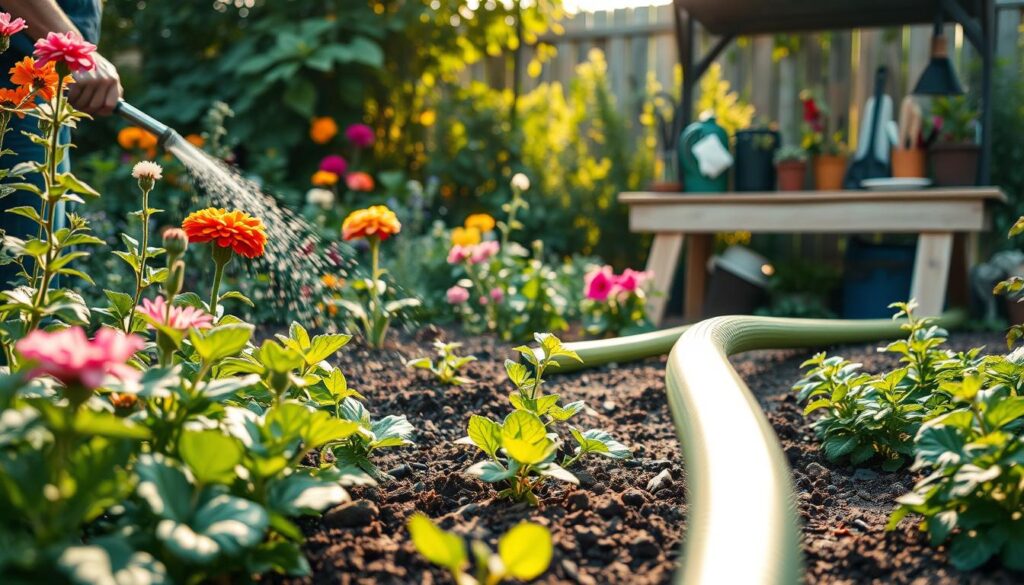
How Often to Water Your Garden
Knowing when to water is crucial for plant health. Overwatering can drown roots, while underwatering leaves plants thirsty. Use the finger test method: insert your finger into the soil up to the second knuckle. If it feels dry, it’s time to water.
Smart irrigation controllers can simplify the process. These devices adjust watering schedules based on weather conditions, saving time and conserving water. Installing a rain gauge also helps track natural rainfall, ensuring your plants get just the right amount of hydration.
Dealing with Pests and Weeds
Pests and weeds can quickly overrun your space if left unchecked. Companion planting is a natural deterrent. For example, marigolds repel aphids, while basil keeps mosquitoes at bay. Organic pesticide recipes, like a mix of neem oil and water, are safe and effective.
Weed suppression fabric is another great tool. It blocks sunlight, preventing weeds from sprouting. For a DIY approach, try mulching with straw or wood chips. These methods not only control weeds but also retain soil moisture.
Encourage beneficial insects like ladybugs and bees by building an insect hotel. These tiny helpers pollinate your plants and keep harmful pests in check. Regular crop rotation also minimizes pest buildup and maintains soil health.
By following these tips, you’ll create a thriving outdoor space that’s easy to maintain. Start small, stay consistent, and enjoy the rewards of your efforts!
Getting Kids Involved in Backyard Gardening
Engaging kids in outdoor activities can spark a lifelong love for nature. Whether it’s planting vegetables or creating a butterfly habitat, these projects teach valuable lessons while being fun. Studies show that hands-on learning has a 94% retention rate, making it an effective way to educate and inspire young minds.
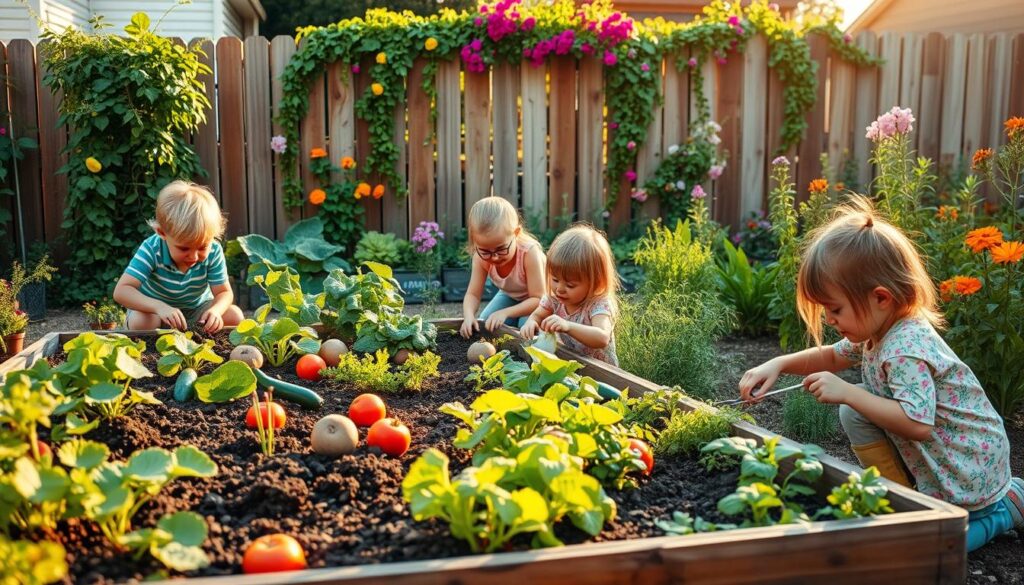
Fun Activities for Young Gardeners
Start with simple projects like a pizza garden. Kids can grow tomatoes, basil, and peppers, then use their harvest to make a meal. This activity combines creativity with practical skills. Other ideas include:
- Making seed bombs for a colorful flower patch.
- Building a butterfly habitat to attract pollinators.
- Creating a scavenger hunt checklist to explore the garden.
These activities keep kids engaged while teaching them about plants and their role in the ecosystem.
Teaching Kids About Nature and Sustainability
Outdoor projects are a great way to introduce kids to sustainability. Teach them about composting by turning kitchen scraps into nutrient-rich soil. Discuss climate change through simple experiments, like measuring rainfall or tracking plant growth.
Here are more ways to integrate learning:
- Use a garden journal to track progress and observations.
- Play water conservation games to highlight the importance of saving resources.
- Incorporate STEM lessons, like measuring plant growth or calculating harvest yields.
“When kids connect with nature, they develop a deeper understanding of the world and their role in protecting it.”
By involving kids in these activities, you’re not just growing vegetables—you’re nurturing future stewards of the planet. Start small, and watch their curiosity and love for nature blossom!
Conclusion
Creating a thriving garden is a journey that rewards patience and effort. Whether you’re a beginner or a seasoned enthusiast, the key to success lies in planning, learning, and adapting. Start small, focus on healthy soil, and experiment with techniques like raised beds to maximize your space.
As you progress, consider joining local gardening communities for support and inspiration. These groups offer valuable tips and a sense of camaraderie. Document your journey with photos and notes to track your growth and celebrate milestones.
Each season brings new opportunities to learn and improve. Save seeds from your best plants for future use, and prepare your garden for winter to ensure a strong start next year. With dedication and curiosity, your garden will flourish, providing joy and fresh produce for years to come.

